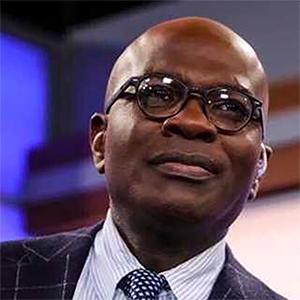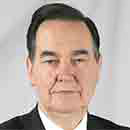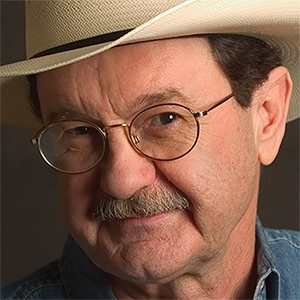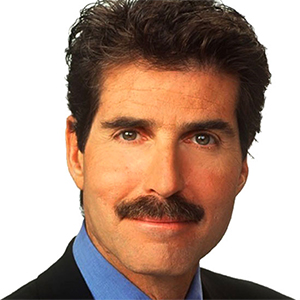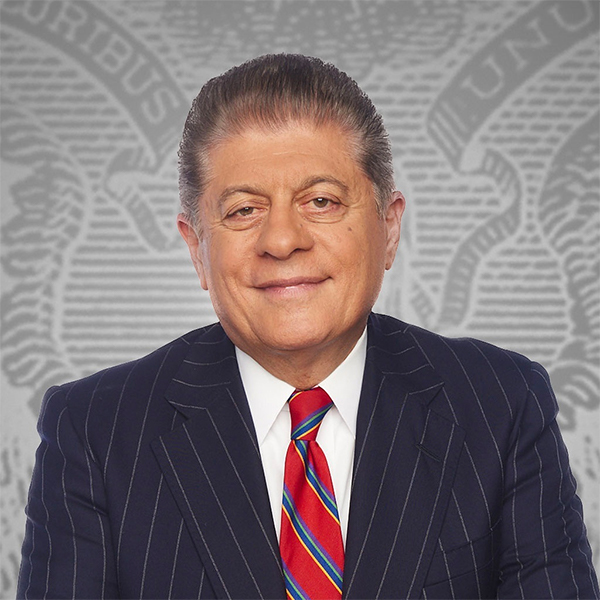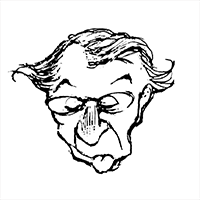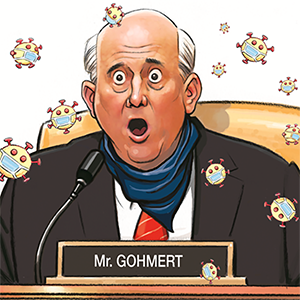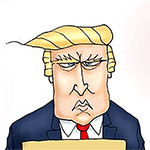Politics
/ArcaMax
Porn advertisers target California secretary of state's website
The state of California's official elections and business registration websites appear to have been compromised by pornography and cash app peddlers.
Google users searching for information related to the sites, both of which are overseen by the California secretary of state, were directed to PDFs with links and titles that include "My friends ...Read more

Twin Cities religious leaders unite to support Somali community and condemn Trump attacks
MINNEAPOLIS — A broad swath of religious leaders packed into a south Minneapolis mosque on Thursday to show solidarity and condemn ongoing attacks from President Donald Trump against Minnesota’s Somali community.
The crowd of more than 50 inside of Umatul Islam Center consisted of imams, pastors, rabbis and leaders from other religions who ...Read more

Supreme Court lets Texas use GOP-redrawn congressional map
WASHINGTON — A sharply divided Supreme Court said Thursday that it would allow Texas to use a new congressional map that targets five seats held by Democrats in next year’s midterms.
The brief, unsigned order paused a ruling from a lower court that had found the state’s new map was likely an unconstitutional racial gerrymander and ordered...Read more

Hegseth keeps Trump's favor for now despite fresh missteps
In the high-frequency churn of President Donald Trump’s first term, Defense Secretary Pete Hegseth’s repeated missteps would have fueled guessing games about his imminent firing. In the second, he has maintained White House support — at least for now.
On Thursday, a Pentagon inspector general found that Hegseth risked endangering U.S. ...Read more

With Cuellar pardon, Trump again appears to undercut GOP's midterm message
On Tuesday, Republican Tano Tijerina kicked off his run in a key South Texas battleground district by highlighting the legal and ethical case against his Democratic opponent, Rep. Henry Cuellar.
On Wednesday, President Donald Trump announced a “full and unconditional” pardon of Cuellar, effectively neutralizing a political attack ...Read more

Trump restricts migrant work permits in immigration crackdown
President Donald Trump’s administration restricted employment authorization for asylum seekers and other immigrants, the latest bid to increase scrutiny of migrants entering the country.
U.S. Citizenship and Immigration Services on Thursday limited work permits for asylum seekers and others with temporary legal status to 18 months. Current ...Read more

Issa will run for reelection in California rather than move to Texas
Republican Rep. Darrell Issa announced Thursday that he would run for reelection next year in his San Diego area district instead of moving to Texas to run in friendly GOP territory.
The announcement follows speculation that Issa was considering relocating to the red state because of Gov. Gavin Newsom’s successful campaign to redraw ...Read more

Supreme Court to hear oral arguments on Rebecca Slaughter firing
WASHINGTON — The Supreme Court is set to hear arguments Monday over President Donald Trump’s decision to fire Federal Trade Commissioner Rebecca Slaughter, in a case that could expand the control a president has over the executive branch.
Directly, the Trump administration asked justices to overturn a decision by the U.S. Court of Appeals ...Read more

'I can hold this seat': After Trump meeting, GOP Rep. Darrell Issa drops idea of Texas move, will seek reelection in San Diego County
U.S. Rep. Darrell Issa, R-Calif., is no longer considering leaving San Diego County to run for Congress in Texas, he said Thursday, capping days of speculation about the future of the longest-serving member of the county’s congressional delegation.
The Republican said that he would run for reelection in California after all, following a ...Read more

Trump replaces architect to lead $300 million ballroom design
WASHINGTON — President Donald Trump has tapped a new architect to help plan his $300 million White House ballroom wing, assigning the former lead designer to a consultant role in the high-profile and controversial project.
Shalom Baranes Associates, a Washington-based architecture firm, will design the ballroom that will be built in place of ...Read more
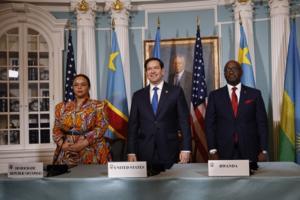
Trump lands Congo-Rwanda peace agreement with impact unclear
President Donald Trump gathered the leaders of Rwanda and the Democratic Republic of Congo to sign a peace accord and economic agreements with the U.S., though it’s unclear whether the efforts will resolve a 30-year conflict that continues to fester.
“They’ve spent a lot of time killing each other and now they’re going to spend a lot of...Read more

Issa will run for reelection in California rather than move to Texas
Republican Rep. Darrell Issa announced Thursday that he would run for reelection next year in his San Diego area district instead of moving to Texas to run in friendly GOP territory.
The announcement follows speculation that Issa was considering relocating to the red state because of Gov. Gavin Newsom's successful campaign to redraw California ...Read more

Central Florida immigrants seeking legal residency thrust into limbo with Trump directive
The immigration process for hundreds in Central Florida and thousands across the country has ground to a stop following the Trump administration’s sweeping directive aimed at immigrants from 19 countries dubbed high-risk.
As the region’s largest of the listed groups, Venezuelans and Haitians awaiting their asylum, green card or ...Read more

Trump to visit Pennsylvania to talk economy
President Donald Trump will visit northeastern Pennsylvania on Tuesday as part of a tour focused on touting his administration's efforts to combat high prices and the work remaining over the next three years.
Full details were not released, but the White House told the Post-Gazette on Thursday that the visit would focus on affordability and ...Read more

Pa. Rep. Brian Fitzpatrick has a plan to extend ACA subsidies and avoid premium hikes for millions. He's ready for an uphill battle
U.S. Rep. Brian Fitzpatrick of Pennsylvania plans to introduce a bipartisan bill as early as this week to extend Affordable Care Act subsidies after the prolonged, bitter shutdown battle this fall left the issue unresolved.
Fitzpatrick, a Bucks County Republican, said on Wednesday the bill’s language is “pretty much buttoned up” and has ...Read more
South Carolina's Nancy Mace denies report that she wants to leave Congress before end of her term
U.S. Rep. Nancy Mace denied a report that she is considering retiring from Congress early following in the footsteps of another firebrand who announced she was leaving next month.
Mace was responding to a New York Times report that said she is considering leaving the U.S. House amid frustrations she has with how Speaker Mike Johnson runs the ...Read more
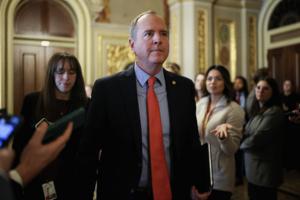
As Trump calls affordability a 'con job,' Democrats unveil an affordable housing plan
WASHINGTON — As the economy emerges as a likely defining issue in next year's midterm elections, President Donald Trump has wrestled with Americans' rising cost of living, declaring himself the "affordability president," then soon dismissing the issue as something that "does not mean anything to anybody."
At two White House events this week, ...Read more

Trump admin threatened to withhold SNAP funds in Pa. and N.J. unless recipient data is released. N.J. AG called stance 'immoral'
The Trump administration’s threat to withhold money that Democratic-run states use to administer the SNAP food aid program unless officials release personal information about individual recipients puts 2 million people in Pennsylvania and more than 800,000 in New Jersey at risk of food insecurity.
On Wednesday, New Jersey Attorney General ...Read more
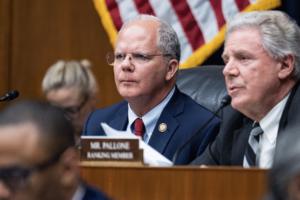
House panel approves broadband permitting overhaul
WASHINGTON — The House Energy and Commerce Committee voted 26-24 along party lines Wednesday to advance a bill to overhaul the broadband permitting system.
The permitting bill would set deadlines for state and local governments to approve or deny certain projects, including personal wireless facilities and telecommunications service ...Read more

Advocacy groups challenge Georgia election law in federal court
ATLANTA – A federal judge on Wednesday considered whether to dismiss a lawsuit challenging provisions of a 2024 state elections law that changed where homeless voters could receive election mail and strengthened the ability of activists to challenge the eligibility of voters.
The consolidated suit seeks to overturn that voter eligibility ...Read more
Popular Stories
- Trump announces pardon for Rep. Henry Cuellar
- Schiff launches Senate bid to block Trump from attacking Venezuela
- Trump's crosshairs on Somali immigrants stoke fear, anger among those in Twin Cities community
- Trump plan would shift billions in homeless funds from housing to requiring work and treatment
- Tech industry drive to block state AI laws hits wall in Congress


